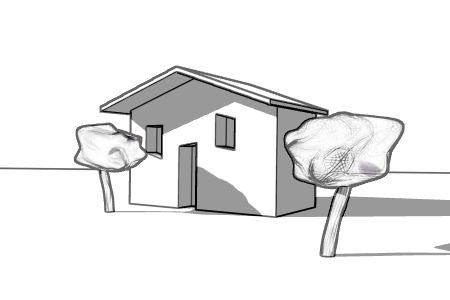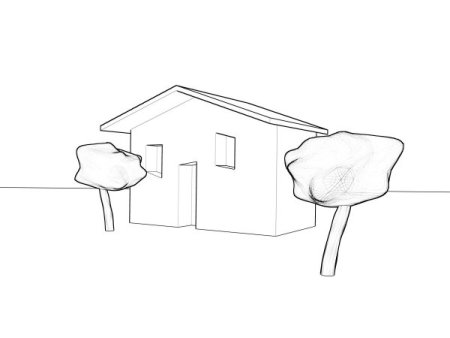
Introduction
In this tutorial, we are going to make a black and white sketch style
with shadows rendering without changing the materials of the scene.
This type of rendering is easy to do without the nodes changing the
materials. But I needed to do a realistic rendering and a sketch style
rendering from the same scene. To be clear, we
are going to make the second image below from the first:


This tutorial needs Blender 2.43. We are not going to see very basic things, so you need at least some basic blender knowledge to make it.
You can find the complete scene here. But I advise to make it from scratch (you will need an object, a lamp casting shadows and a camera at least), or you can use this .blend with my simple scene without the nodes.Step 1 : the render layer for the edges
To see the edges in the rendering, you need to activate Edge in the render panel. We can check too that Ray and Shadow are activated, as well as Do Composite (for the rendering to use nodes).

Go now in the Render Layers panel, and you should have something like that:

Step 2 : First nodes
Open a Node Editor window and check the Composite
Node (the
small face) We will need the three very basic nodes for a beginning. I
will not explain here the basic usage of nodes, if you want to know
more, you should find some other tutorials easily.
Spacebar, Add, Input, Render Layers: if this is your first node, congrats ! In this node (marked as 1 in the screenshot below) you can choose what render layer we will use.
Spacebar, Add, Output, Composite: This one (marked as 2) is the one of the final render.
Lets forget about nodes for a while. If you know the edge settings, you can jump to Step 4.
In the Output panel, with Edge Settings you can change the color and darkness (Eint) for the edges.First image below has Eint set to 11, the second to 255:



Lets make a second render layer "shadows" with the following settings:

We need to make ADD NEW, choose the name, check Solid (to have shadows) but nothing else. We need to check Sha too, so that the shadows are rendered in a separate pass.
In the node editor, we add a new input render layer, we choose the render layer shadows and we can see another output for this node called shadow. If you connect it to the viewer, you should have something like that:

Now we are going to mix the two render layers with a mix node ( Spacebar,Add, Color, Mix). This node has two yellow inputs for our two render layers and one output we are going to connect to both viewer and composite node. The default settings are Mix and Fac=0.5, which are convenient here. You can try other settings (if you know The Gimp or the other one, you will understand easily how it works). So at the end, we have something like that:

Conclusion
This is the end. But you can continue with my other tutorial to see how
to have this type of render:

Creative Commons, VIRALATA, Février 2007